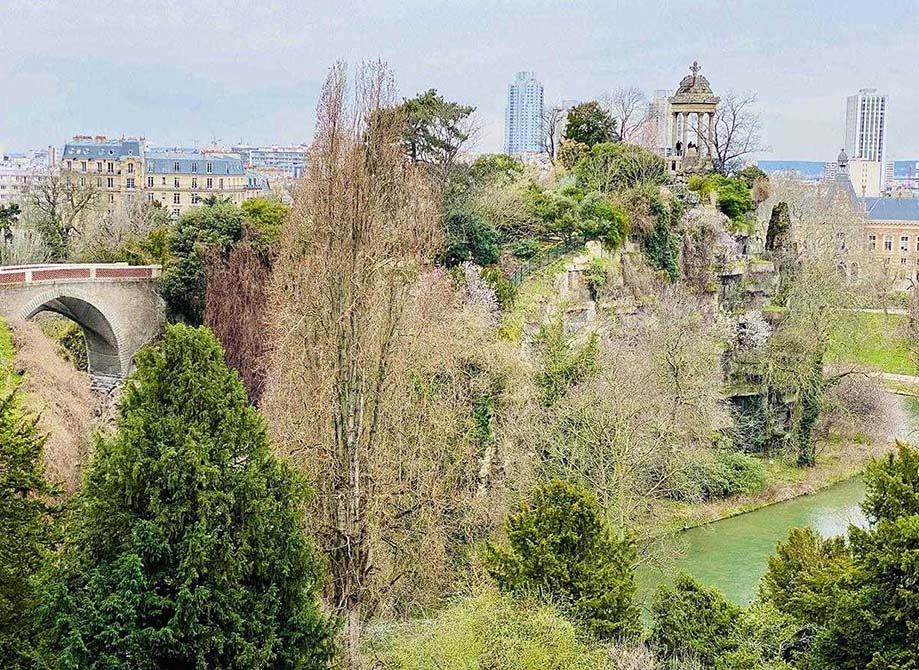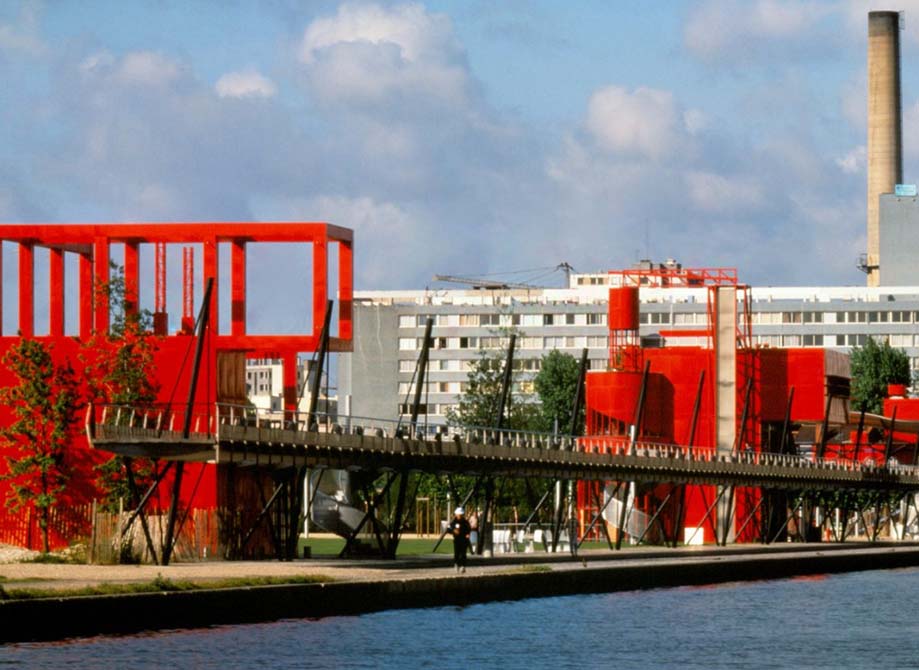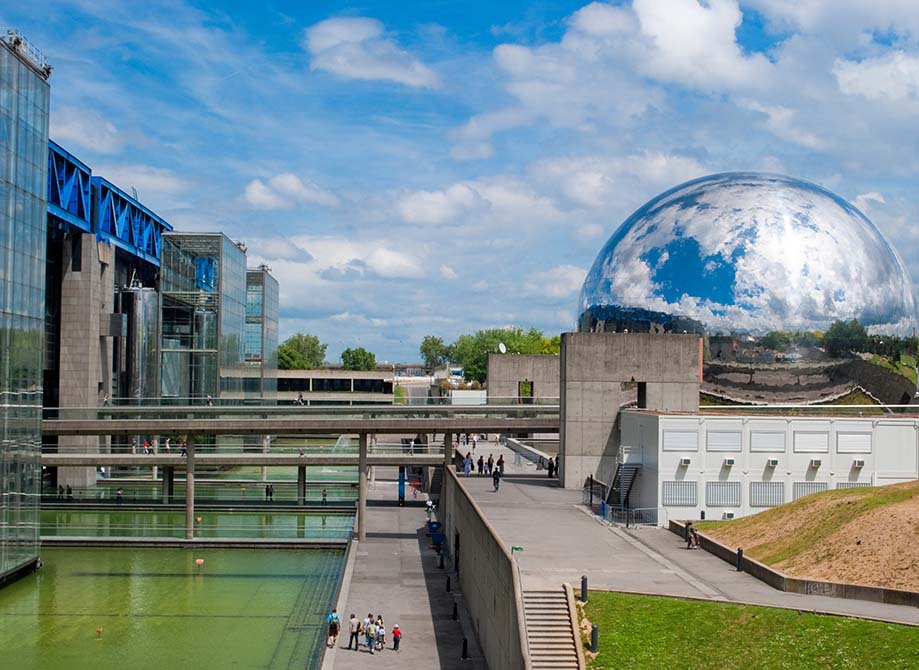This city, known for its iconic landmarks such as the Eiffel Tower and Louvre Museum, also boasts an array of stunning gardens that offer respite from the urban chaos. I will take you on a captivating journey through these secret paradises, sharing my personal experiences and insights on the various gardens that I visited. From the grandeur of the Luxembourg Gardens to the quaint charm of Parc des Buttes-Chaumont, this exploration delves deep into the heart of Parisian greenery, unraveling the stories, history, and beauty that each garden holds.
1: Jardin des Tuileries
My journey through the gardens of Paris began with the iconic Jardin des Tuileries. Nestled between the Louvre Museum and the Place de la Concorde, this garden is the perfect starting point for any exploration of the city’s green spaces. Covering an area of 28 hectares, it boasts an impressive history dating back to the 16th century when it was designed by Queen Catherine de’ Medici.
The grandeur of Jardin des Tuileries is evident from the moment you enter. Rows of perfectly manicured trees line the paths, creating a sense of symmetry and order. The fountains and statues strategically placed throughout the garden add an air of elegance and opulence. One can’t help but feel transported back in time as they stroll along the tree-lined promenades.
As I explored the garden, I couldn’t help but marvel at the beautiful sculptures that adorn it. The sculptures tell the stories of Greek and Roman mythology, bringing an element of classicism to the otherwise modern Paris. The most famous among them is the “Winged Victory of Samothrace,” a masterpiece that stands prominently at the top of a grand staircase.
Jardin des Tuileries is not just a visual delight; it is a place where locals and tourists alike come to relax and unwind. The green metal chairs scattered throughout the garden provide the perfect spot for a leisurely afternoon. I joined the Parisians in this charming ritual, taking a seat and watching the world go by.
The garden also features two small ponds, where visitors can rent miniature sailboats to navigate. It was a delight to watch children and adults alike, carefully maneuvering their boats with glee. The serene reflection of the Louvre in the water only added to the picturesque ambiance.
2: Luxembourg Gardens (Jardin du Luxembourg)
My next stop on the Parisian garden tour was the enchanting Luxembourg Gardens, or Jardin du Luxembourg, located in the heart of the Latin Quarter. This garden holds a special place in my heart due to its rich history and serene beauty.
Jardin du Luxembourg was created in the early 17th century and was originally part of the Luxembourg Palace, built for Queen Marie de’ Medici. It is a harmonious blend of French formal and English informal garden styles, offering a unique atmosphere that captures the essence of both classic and romantic gardens.
The centerpiece of the garden is the large octagonal basin adorned with a statue of the French Queen herself. Surrounding the basin are meticulously pruned lawns, colorful flowerbeds, and charming tree-lined alleys that lead to hidden corners and delightful surprises.
One of the most captivating features of Jardin du Luxembourg is its collection of more than a hundred statues and fountains, including the monumental Medici Fountain. This ornate fountain is a work of art in itself, surrounded by a lush grove of trees that create a tranquil retreat within the bustling city.
As I wandered through the garden, I couldn’t help but notice the locals and visitors who had come to relax on the iconic green chairs scattered around the park. It’s a place where people of all ages come to read, chat, or simply bask in the sun. Children can often be seen pushing small sailboats in the pond, a beloved pastime that brings smiles to their faces and joy to those watching.
3: Parc des Buttes-Chaumont

My exploration of Parisian gardens took a slightly different turn as I made my way to the Parc des Buttes-Chaumont, a hidden gem nestled in the 19th arrondissement. Unlike the meticulously manicured gardens I had visited earlier, this park exudes a wild and natural charm that transports you far from the city’s urban hustle and bustle.
Parc des Buttes-Chaumont is a product of the 19th-century urban planning, transforming a former gypsum quarry into a picturesque park. As I entered through its imposing iron gates, I was immediately struck by the park’s dramatic landscape. A 30-meter tall rocky hill known as the Belvédère provides panoramic views of Paris, making it an ideal spot to start your visit.
The centerpiece of the park is the Temple de la Sibylle, a Corinthian-style temple perched on a rocky island in the middle of a tranquil lake. To reach the temple, visitors cross a suspension bridge that adds an element of adventure to the park experience. The views from the temple are breathtaking, offering a sense of serenity and escape from the urban life just beyond the park’s borders.
One of the most memorable features of Parc des Buttes-Chaumont is the lush and diverse plant life. The park hosts a wide variety of trees and shrubs, including several rare species, creating a haven for nature enthusiasts. The winding paths lead to hidden corners and secluded alcoves, making it a perfect place for a leisurely stroll or a picnic.
4: Parc des Princes
My exploration of Paris’s hidden gardens took me to the Parc des Princes, a delightful and lesser-known park in the 16th arrondissement. While it may not be as famous as some of the city’s other green spaces, this park offers a serene and picturesque escape that’s well worth a visit.
Parc des Princes is an intimate and peaceful garden with a history dating back to the 19th century. The park’s main feature is a picturesque pond, complete with ducks and swans gliding gracefully on its surface. The pond is surrounded by a variety of lush trees and flowers, creating a serene atmosphere that feels far removed from the city’s noise.
What sets Parc des Princes apart is its charming architectural features. A beautiful footbridge, adorned with intricate wrought-iron railings, crosses the pond, creating a perfect spot for a leisurely stroll. The park also houses a quaint little temple and several sculptures that add to its aesthetic charm.
As I explored the park, I couldn’t help but notice the sense of tranquility that enveloped the place. It’s the ideal setting for a quiet afternoon spent reading a book, having a picnic, or simply taking in the natural beauty. With its smaller size and secluded location, Parc des Princes offers a more intimate and peaceful garden experience compared to the larger, more famous gardens in the city.
5: Parc des Buttes-Chaumont
As I continued my exploration of Paris’s hidden gardens, I stumbled upon another delightful green oasis known as Parc des Buttes-Chaumont. This park, not to be confused with the Parc des Buttes-Chaumont mentioned earlier, is located in the 20th arrondissement and offers a different, yet equally enchanting experience.
Parc des Buttes-Chaumont, also known as Belleville Park, is a product of urban renewal efforts in the 19th century, and it has a unique and somewhat whimsical character. The park’s main attraction is a towering hill with a rocky summit, the Temple de la Sibylle, which is a replica of the Roman Temple of Vesta. The temple offers commanding views of the city, and reaching it involves a scenic walk through bridges and pathways that cross over lush greenery and a man-made waterfall.
What makes this park truly special is its rugged terrain and dramatic landscape. The hill, along with the temple, creates a sense of adventure as you explore the park. The towering cliffs and rocky outcrops make it feel like you’ve stepped into a different world, far from the urban environment of Paris.
Parc des Buttes-Chaumont also boasts a beautiful lake, adorned with willow trees that create a tranquil ambiance. Ducks and swans swim in the clear waters, and it’s a delightful sight to see families enjoying picnics by the water’s edge. The park’s charming footbridges add to the picturesque setting, and they are perfect for taking in the serene surroundings.
6: Parc de la Villette
My journey through the gardens of Paris continued with a visit to Parc de la Villette, a modern and innovative park located in the 19th arrondissement. Unlike the traditional French gardens I had explored earlier, this park is a testament to contemporary landscape design and creativity.
Parc de la Villette is a vast urban park that stretches across 55 hectares. It is known for its avant-garde architecture, artistic installations, and a wide range of cultural and recreational activities. The park was designed by the architect Bernard Tschumi and officially opened in 1987.
One of the park’s most distinctive features is the red “Folies,” a series of bold, abstract structures that house various cultural and educational facilities. These structures create a striking contrast with the surrounding greenery and provide an exciting, futuristic backdrop for the park.
Throughout the year, Parc de la Villette hosts numerous events, including concerts, outdoor film screenings, and art exhibitions. The cultural programming adds a dynamic element to the park, making it a vibrant and ever-changing destination.

For those interested in science and exploration, the Cité des Sciences et de l’Industrie, one of Europe’s largest science museums, is located within the park. The museum offers interactive exhibits and activities that are both educational and entertaining for visitors of all ages.
7: Parc Montsouris
My exploration of Paris’s hidden gardens led me to Parc Montsouris, a picturesque park located in the 14th arrondissement. This park offers a tranquil escape from the city’s hustle and bustle while embracing a harmonious blend of nature and architecture.
Parc Montsouris was designed in the 19th century during the urban planning projects of Emperor Napoleon III. Its lush landscape covers an area of 15 hectares and centers around a man-made lake, which is a focal point for both relaxation and recreation. The park’s name derives from the Mont Souris (Mouse Hill), an artificial mound created from the soil removed during the construction of Paris’s sewers.
The lake at Parc Montsouris is surrounded by weeping willow trees, creating a peaceful and serene setting. Visitors can rent small boats to paddle across the lake or simply relax on the park’s green lawns, enjoying a picnic or reading a book. The lake’s central island, known as the Île de la Bièvre, features picturesque bridges that add to the park’s romantic ambiance.
One of the park’s most distinctive features is its unique collection of exotic trees and plants. Strolling along the winding paths, you’ll encounter a variety of tree species from around the world, including pines, cedars, and magnolias. Parc Montsouris is a haven for nature enthusiasts and botany lovers, offering an opportunity to appreciate the beauty of diverse flora.
The park also features a classical-style terrace and a neoclassical temple, both of which provide excellent vantage points for taking in the surrounding landscape. As I stood on the terrace, I marveled at the park’s ability to provide a sense of tranquility in the heart of a bustling city.
8: Parc de Bagatelle

My journey through the gardens of Paris took me to the enchanting Parc de Bagatelle, a hidden gem nestled within the Bois de Boulogne in the 16th arrondissement. This historic park, known for its rose garden and charming architecture, offers a unique and romantic garden experience.
Parc de Bagatelle has a rich history dating back to the late 18th century. It was created as a result of a bet between Queen Marie Antoinette and her brother-in-law, the Count of Artois, to build a château in just 64 days. While the château itself is a remarkable architectural achievement, the surrounding gardens are equally impressive.
One of the highlights of Parc de Bagatelle is its renowned rose garden, which features over 10,000 rose bushes representing nearly 1,200 different varieties. The roses are at their most vibrant and fragrant from late spring to early summer, creating a stunning and romantic backdrop for visitors.
Wandering through the rose garden, I was surrounded by an explosion of colors and scents. It was a sensory delight, and I couldn’t resist stopping to admire the different varieties, each with its own unique beauty. The garden is a favorite spot for photographers, as the roses provide a picturesque setting for capturing the essence of romance.
In addition to the rose garden, Parc de Bagatelle offers a delightful blend of architectural elements and natural beauty. The park features picturesque grottoes, water features, and hidden alcoves that invite exploration and provide the perfect setting for quiet reflection. The château itself, with its neoclassical design, is a charming piece of architecture that complements the garden’s aesthetics.
9: Parc de la Tete d’Or
My journey through the gardens of Paris took an unexpected turn as I visited Parc de la Tete d’Or in Lyon, a city renowned for its rich history and cultural heritage. Although not located in the heart of Paris, this park offers a unique experience that is well worth the journey.
Parc de la Tete d’Or, or the Golden Head Park, is a vast and enchanting urban park located in Lyon’s 6th arrondissement. Covering over 117 hectares, it is one of the largest urban parks in France. The park’s name is derived from the legend of a hidden treasure, and its lush landscape is nothing short of a treasure itself.
One of the park’s most iconic features is its magnificent lake, which offers opportunities for boating and relaxation. The lake is surrounded by graceful swans and ducks, and it’s a favorite spot for visitors looking to enjoy a leisurely afternoon by the water.
My journey through the gardens of Paris and a brief detour to Parc de la Tête d’Or in Lyon has been a remarkable exploration of nature’s beauty and human creativity. Each garden I visited, from the grandeur of Jardin des Tuileries to the romantic charm of Parc de Bagatelle, offered a unique and enchanting experience. Paris, often celebrated for its iconic landmarks and rich history, also holds a hidden world of green oases that provide respite from the urban hustle and bustle.
These gardens are not mere spaces of tranquility; they are living canvases that tell stories of history, culture, and human ingenuity. The meticulous designs of Jardin des Tuileries and Jardin du Luxembourg transport visitors back in time, while the rugged terrain of Parc des Buttes-Chaumont and the modernity of Parc de la Villette showcase the evolution of garden design in a bustling metropolis.
From picturesque ponds and serene lakes to vibrant flowerbeds and exotic trees, the variety of flora and fauna in these gardens is a testament to the beauty of the natural world. The artistic sculptures, fountains, and architectural structures that adorn these spaces add depth and character to the green landscapes, making them even more captivating.
As I navigated the city’s hidden gardens, I witnessed locals and tourists alike finding solace, joy, and inspiration in these urban oases. The simple act of sitting in a green metal chair, picnicking by a serene pond, or exploring hidden pathways can bring a sense of peace and connection to the natural world. Paris’s gardens are not just places to visit; they are experiences to be cherished.
In the heart of a bustling city, these gardens serve as a reminder of the importance of preserving and creating green spaces that offer respite from the concrete jungle. They are not only a testament to the city’s commitment to maintaining its natural heritage but also an invitation to visitors to escape, reflect, and find inspiration in the embrace of nature.
So, as I conclude my journey through the gardens of Paris and Lyon, I leave with a deeper appreciation for the beauty and serenity that can be found within urban landscapes. These hidden green oases have left an indelible mark on my travels, and I hope that my experiences and insights inspire you to embark on your own exploration of these enchanting gardens. Paris, a city of love and romance, also harbors secret gardens waiting to be discovered, offering moments of magic and tranquility amidst the bustling streets.
